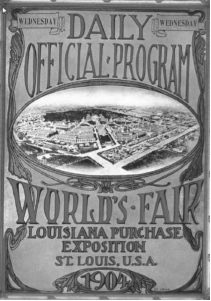Winnipeg Shamrocks
The Winnipeg Shamrocks played field lacrosse in the Western Canadian Lacrosse Association senior league during what the newspapers described as the “Golden Age of Lacrosse” in Manitoba (1890’s to 1914). During this period, most schools in Winnipeg and a large number of schools in the rural areas had lacrosse teams leading to hundreds of boys playing the game and crowds in excess of 5000 people filling Old Exhibition Grounds and Wesley Park for games on Sunday nights.
The Western Canadian Lacrosse Association senior league was composed of the Shamrocks, The Winnipeg Lacrosse Club, the Ninetieth (a team made up of soldiers based in Winnipeg), the Mintos, and with teams from Brandon and Souris. This was a highly competitive league- upon returning with their Olympic Gold Medals; the Shamrocks lost the league championship to Souris in 1904.
By virtue of winning the league championship in 1903 the Shamrocks were described in the newspapers as Western Canadian Lacrosse Champions. This title provided them with the opportunity to compete in St. Louis in the 1904 Olympic games.
The Winnipeg Shamrocks, who competed in the first Olympiad to feature lacrosse were: Elie Blanchard, W. Brennaugh, George Bretz, William Laurie Burns, George Cattanach, George Cloutier, Sandy Cowan, Jack Flett, Benjamin Jamieson, Stuart Ralston Laidlaw, H. Lyle, William F.L. Orris, L.H. Pentland.
On their way to the Olympic Games in St. Louis, the Shamrocks played a series of exhibition matches in St. Paul, and Chicago. Crowds of over 3000 spectators watched the Shamrocks. The local newspaper paper described these crowds as “easily the largest crowds to ever see a lacrosse game in Chicago.” The Chicago Tribune described the play of the Canadians “as the most accurate passing ever seen ever seen in this city. Every movement showing them to be splendid players. Their dodging and backhand shots were far superior to the local side.”
The St. Louis Olympics was held in conjunction with the 1904 World’s Fair, with different sporting competitions being held from May through November. The St. Louis Games attracted 687 athletes from 13 countries. Four teams were entered in the lacrosse competition: St. Louis AAA, Brooklyn Crescents, a team of Mohawk players from Ontqrio, and the Winnipeg Shamrocks. The team from Brooklyn did not compete due to questions related to the amateur status of some of their players.
The Shamrocks started the competition on July 6, by defeating the St. Louis AAA team 6 to 1. This victory moved the Shamrocks directly to the Gold Medal game against St. Louis AAA, who soundly beat the Mohawk squad in a semi-final game. The Gold Medal was played on the in field of the World’s Fair stadium in front of a crowd of over 60,000 excited fans. The Shamrocks ended a close game by scoring 5 unanswered goals in the fourth quarter winning 8 to 2. The victory was front-page news back in Winnipeg.
Frustrated by the quality of the opposition, the Shamrocks returned home immediately after the championship game. Upon returning to Winnipeg they received a heroes welcome, with their first game back in Winnipeg drawing over 10,000 lacrosse fanatics to the Old Exhibition Grounds.
The Shamrocks proved themselves to be tremendous representatives of Winnipeg and the game of lacrosse, drawing record crowds from St. Paul to St. Louis, awing spectators with their crisp passing, synchronized team play, and razzle-dazzle backhand shots.
The Shamrocks continued to complete until the outbreak of World War 1. As with many sports, lacrosse leagues and competitions were closed down to focus on the war effort. The leagues did not re-form after the war and the reign of the Winnipeg Shamrocks and the Golden Age of Lacrosse in Manitoba ended.



